
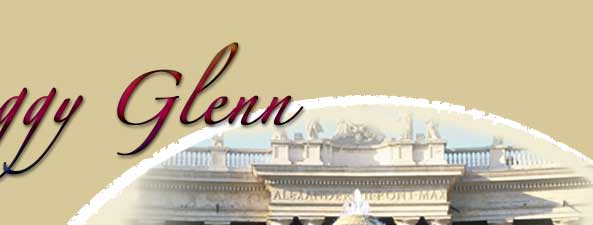









Page 16 |
|
| Miscellaneous Rome | |
| The Pantheon | |
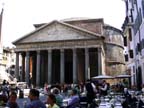 |
The Pantheon was erected between 27 and 25 AD. The temple's name is Greek meaning "of all the Gods." The temple was remodeled extensively between 118 and 125 AD by Hadrian. It is a round building 130 feet in diameter with a domed ceiling 130 feet in height. |
| The outside of the dome had a bronze casting over it until St. Peter's was built, then Bernini had it removed under the orders of Pope Urban VIII to cast the great baldachin which sits over St. Peter's tomb. (There are pictures of this on The Vatican page.) |
|
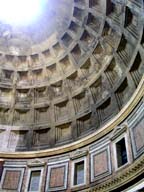 |
The amazing thing is that the domed ceiling has a 23-foot round hole in the center which allows rain to come right on in. |
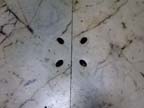 |
The floor has 24 small drain holes scattered throughout the middle to drain all the water coming in. |
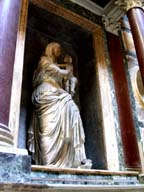 |
The floor and the walls up to about 50 feet high are all marble. The columns are made of many rare marbles including Numidian yellow, Porphyry red and Phrygian purple. It is one of the only monuments of antiquity with the interior still in its original form. |
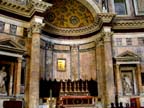 |
Pope Boniface IV received the building as a gift from the Byzantine Emperor Phoeas in 808 AD and transformed it from a pagan temple into a Christian church, dedicating it to the Madonna and all the martyrs (Santa Maria and Martyrs). |
| Castel Sant’Angelo | |
 |
This building started as the Mausoleum of Hadrian around 130 AD. It had a massive core of 195 feet and was surrounded by a square base. Hadrian died in 138 AD but the building was not finished until 139 AD, which is when his body was buried there. |
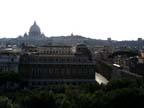 |
Around the 10th century the mausoleum, now called Castel Sant'Angelo (after the Archangel Michael), was converted into a fortress serving to defend the Vatican. At that time a wall was built which has a passageway that leads to the Vatican. This allowed the pope to leave the Vatican in safety and walk to the fort if he was under attack. Part of the walkway is covered, and part is not, but it is at least 50 feet high so it was relatively safe. The walkway is about six blocks long. You can see the walkway on the right side of this picture. |
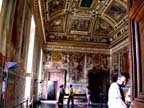 |
In the 16th century two different popes lived in the castle, Pope Paul III Farnese and Pope Clement VII. Their rooms were a little decorative to say the least. |
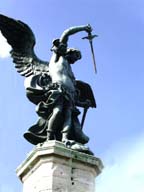 |
The Archangel Michael stands guard on the roof. He is there because of a vision St. Gregory the Great saw in 509 AD while leading a solemn procession around the city praying for relief from the plague which was raging through Rome at the time. He saw the angel on top of the tower sheathing his sword, and thus, with this gesture, announcing the end of the plague. |
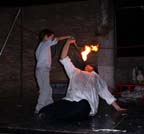 |
This summer for one month the castle was open for the first time ever at night. It was a party with music, artisans, guided tours, food and a fire eater. Just like in the old days, a good time was had by all, even if it was crowded. |
| The Trevi Fountain |
|
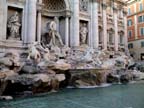 |
The Trevi Fountain was commissioned by Pope Clement XII in 1739. In the center is a large statue of Oceanus, on either side in the water are two seahorses and two Tritons. To the right of Oceanus is a statue of Salubrity and on the left a statue of Abundance. |
| The big attraction here is that all tourist, legend says that if you want to return to Rome, you must throw a coin in the water over your shoulder. This is a very ancient superstition that even the Romans observe from the 4th century on using Curtain Lake. |
|
| Spanish Steps | |
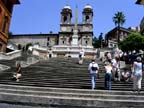 |
To tell you the truth, I never did get to hear the story behind the steps, but here is a picture for you. |
Website Copyright ©2003 All rights reserved. Peggy Glenn